Vulnerability of Existing RC Building with Seismic Damage Scenarios: Case of Educational Buildings in Mostaganem City
Abstract
1. Introduction
2. Inventory of the Educational System in Algeria
2.1. Buildings Designed before the El-Asnam Earthquake on 10 October 1980 (Date < 1980)
2.2. Buildings Designed with the RPA 81V83; RPA 81V88 (1980 < Date < 1999)
2.3. Buildings Designed with RPA 99 (1999 < Date < 2003)
2.4. Buildings Designed with RPA 99V2003 (Date < 2003)
| Years | Primary School | Middle School | Secondary School | Universities | Total | Codes Application | Years | Primary School | Middle School | Secondary School | Universities | Total | Codes Application |
|---|---|---|---|---|---|---|---|---|---|---|---|---|---|
| 1962–1963 | 2263 | 364 | 39 | 8 | 2674 | No seismic building codes | 1991–1992 | 13,461 | 2433 | 845 | 54 | 16,793 | Seismic building code: RPA 1980 |
| 1963–1964 | -- | 379 | -- | 8 | 387 | 1992–1993 | 13,970 | 2541 | 883 | 55 | 17,449 | ||
| 1964–1965 | 4065 | 418 | -- | 10 | 4493 | 1993–1994 | 14,734 | 2651 | 912 | 55 | 18,352 | ||
| 1965–1966 | 4255 | -- | -- | 11 | 4266 | 1994–1995 | 14,836 | 2778 | 968 | 56 | 18,638 | ||
| 1966–1967 | 4266 | 427 | 59 | 12 | 4764 | 1995–1996 | 15,186 | 2921 | 1033 | 57 | 19,197 | ||
| 1967–1968 | 4581 | 454 | 63 | 12 | 5110 | 1996–1997 | 15,426 | 3038 | 1100 | 58 | 19,622 | ||
| 1968–1969 | 5073 | 478 | 63 | 13 | 5627 | 1997–1998 | 15,199 | 3145 | 1132 | 58 | 19,534 | ||
| 1969–1970 | 5263 | 502 | 67 | 15 | 5847 | 1998–1999 | 15,507 | 3224 | 1183 | 59 | 19,973 | ||
| 1970–1971 | 6467 | 519 | 72 | 20 | 7078 | 12/22/1999: Ain Temouchent Earthquake, Intensity (EMS 98) = VII | |||||||
| 1971–1972 | 6507 | 530 | 71 | 22 | 7130 | 1999–2000 | 15,729 | 3315 | 1218 | 59 | 20,321 | Seismic building code: RPA 1999 | |
| 1972–1973 | 6990 | 540 | 86 | 23 | 7639 | 2000–2001 | 16,186 | 3414 | 1259 | 60 | 20,919 | ||
| 1973–1974 | 7376 | 545 | 93 | 23 | 8037 | 2001–2002 | 16,482 | 3526 | 1289 | 62 | 21,359 | ||
| 1974–1975 | 7794 | 569 | 114 | 25 | 8502 | 2002–2003 | 16,714 | 3650 | 1330 | 62 | 21,756 | ||
| 1975–1976 | 7798 | 584 | 120 | 26 | 8528 | 5/21/2003: Boumerdes Earthquake, Intensity (EMS 98) = IX | |||||||
| 1976–1977 | 8182 | 665 | 142 | 27 | 9016 | ||||||||
| 1977–1978 | 8380 | 788 | 175 | 30 | 9373 | 2003–2004 | 16,899 | 3740 | 1 381 | 62 | 22,082 | Updating of the Algerian earthquake regulation: RPA99/V2003 | |
| 1978–1979 | 8652 | 812 | 181 | 32 | 9677 | 2004–2005 | 17,041 | 3 844 | 1 423 | 64 | 22,372 | ||
| 1979–1980 | 9034 | 873 | 208 | 32 | 10,147 | 2005–2006 | 17,163 | 3 947 | 1 473 | 66 | 22,649 | ||
| 10/10/1980: El-Asnam major earthquake, Intensity (EMS 98) = X | 2006–2007 | 17,357 | 4 104 | 1 538 | 67 | 23,066 | |||||||
| 2007–2008 | 17,429 | 4 272 | 1 591 | 68 | 23,360 | ||||||||
| 2008–2009 | 17,552 | 4 579 | 1 658 | 72 | 23,861 | ||||||||
| 1980–1981 | 9263 | 932 | 230 | 33 | 10,458 | Seismic building code: RPA1980 | 2009–2010 | 17,680 | 4 784 | 1 745 | 80 | 24,289 | |
| 1981–1982 | 9399 | 1036 | 246 | 34 | 10,715 | 2010–2011 | 17,790 | 4 901 | 1 813 | 86 | 24,590 | ||
| 1982–1983 | 9864 | 1181 | 272 | 34 | 11,351 | 2011–2012 | 17 853 | 5 007 | 1 870 | 95 | 24,825 | ||
| 1983–1984 | 10,266 | 1267 | 319 | 37 | 11,889 | 2012–2013 | 17,994 | 5 086 | 1 956 | 98 | 25,134 | ||
| 1984–1985 | 10,588 | 1388 | 353 | 40 | 12,369 | 2013–2014 | 18,248 | 5 185 | 2 065 | 99 | 25,597 | ||
| 1985–1986 | 11,144 | 1561 | 415 | 42 | 13,162 | 2014–2015 | 18,333 | 5 239 | 2147 | 105 | 25,824 | ||
| 1986–1987 | 11,427 | 1747 | 481 | 49 | 13,704 | 2015–2016 | 18,588 | 5 339 | 2251 | 110 | 26,288 | ||
| 1987–1988 | 11,843 | 1929 | 550 | 50 | 14,372 | 2016–2017 | 18,770 | 5 419 | 2355 | 111 | 26,655 | ||
| 1988–1989 | 12,240 | 2108 | 705 | 51 | 15,104 | 2017–2018 | 18,856 | 5455 | 2392 | 115 | 26,818 | ||
| 1989–1990 | 12,694 | 2248 | 758 | 52 | 15,752 | 2018–2019 | 19,037 | 5512 | 2433 | 116 | 27,098 | ||
| 1990–1991 | 13,135 | 2339 | 812 | 53 | 16,339 | 2019–2020 | 19,308 | 5630 | 2488 | 116 | 27,542 | ||
3. Damage to the Educational System Due to Various Earthquakes
Classification of Damages Using the RISK-UE Method According to EMS-98
| Classification of Damage to Buildings of Reinforced Concrete | |
|---|---|
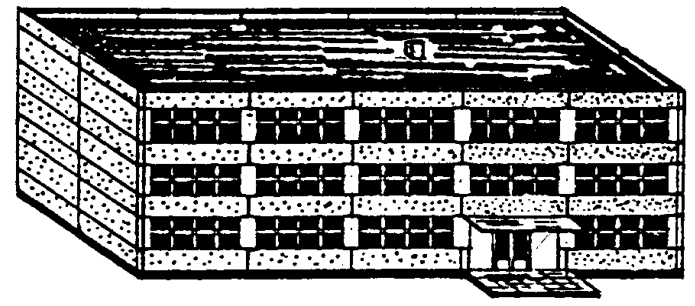 | Grade 1: Negligible to slight damage (No structural damage, slight non-structural damage) Fine cracks in plaster over frame members or in walls at the base. Fine cracks in partitions and infills. |
 | Grade 2: Moderate damage (Slight structural damage, moderate non-structural damage) Cracks in columns and beams of frames and in structural walls. Cracks in partition and infill walls; fall of brittle cladding and plaster. Falling mortar from the joints of wall panels. |
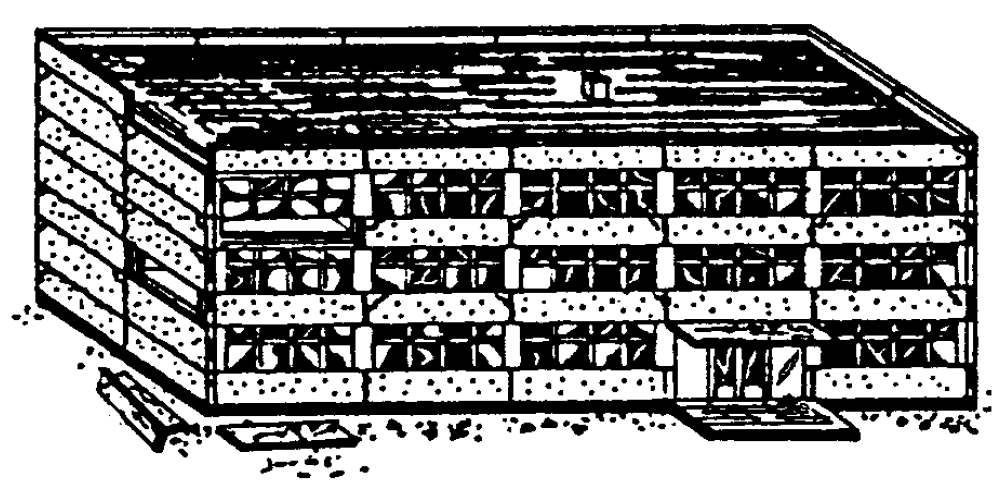 | Grade 3: Substantial to heavy damage (Moderate structural damage, heavy non-structural damage) Cracks in columns and beam column joints of frames at the base and at joints of coupled walls. Spalling of concrete cover, buckling of reinforced rods. Large cracks in partition and infill walls, failure of individual infill panels. |
 | Grade 4: Very heavy damage (Heavy structural damage, very heavy non-structural damage) Large cracks in structural elements with compression failure of concrete and fracture of rebars; bond failure of beam reinforced bars; tilting of columns. Collapse of a few columns or of a single upper floor. |
 | Grade 5: Destruction (Very heavy structural damage) Collapse of ground floor or parts (e.g., wings) of buildings. |
4. Study Area

5. RISK-UE lm1 Approach
6. Results and Discussion
6.1. Estimation of Vulnerability Index
| RISK-UE Type | Description | Number | (%) | ∑ (%) | |
|---|---|---|---|---|---|
| RC Buildings | RC3.1 | Regularly infilled walls | 483 | 93.60 | 100 |
| RC3.2 | Irregular frames | 14 | 2.71 | ||
| RC4 | RC dual systems (RC frame and wall) | 4 | 0.78 | ||
| RC5 | Precast concrete tilt-up walls | 15 | 2.91 | ||
| Total | 516 | 100.00 |
| Vulnerability Factors | Earthquake Resistant Design (ERD) Level | |||
|---|---|---|---|---|
| Pre or Low Code | Medium Code | High Code | ||
| Code Level | +0.16 | 0 | −0.16 | |
| Bad Maintenance | +0.04 | +0.02 | 0 | |
| Number of floors | Low (1 or 2) | −0.04 | -0.04 | −0.04 |
| Medium (3, 4 or 5) | 0 | 0 | 0 | |
| High (6 or more) | +0.08 | +0.06 | +0.04 | |
| Plan Irregularity | Shape | +0.04 | +0.02 | 0 |
| Torsion | +0.02 | +0.01 | 0 | |
| Vertical Irregularity | +0.04 | +0.02 | 0 | |
| Short-column | +0.02 | +0.01 | 0 | |
| Bow windows | +0.04 | +0.02 | 0 | |
| Aggregate buildings (Insufficient aseismic joint) | +0.04 | 0 | 0 | |
| Foundation | Beams | -0.04 | 0 | 0 |
| Connected Beans | 0 | 0 | 0 | |
| Isolated Footing | +0.04 | 0 | 0 | |
| Soil Morphology | Slope | +0.02 | +0.02 | +0.02 |
| Cliff | +0.04 | +0.04 | +0.04 | |
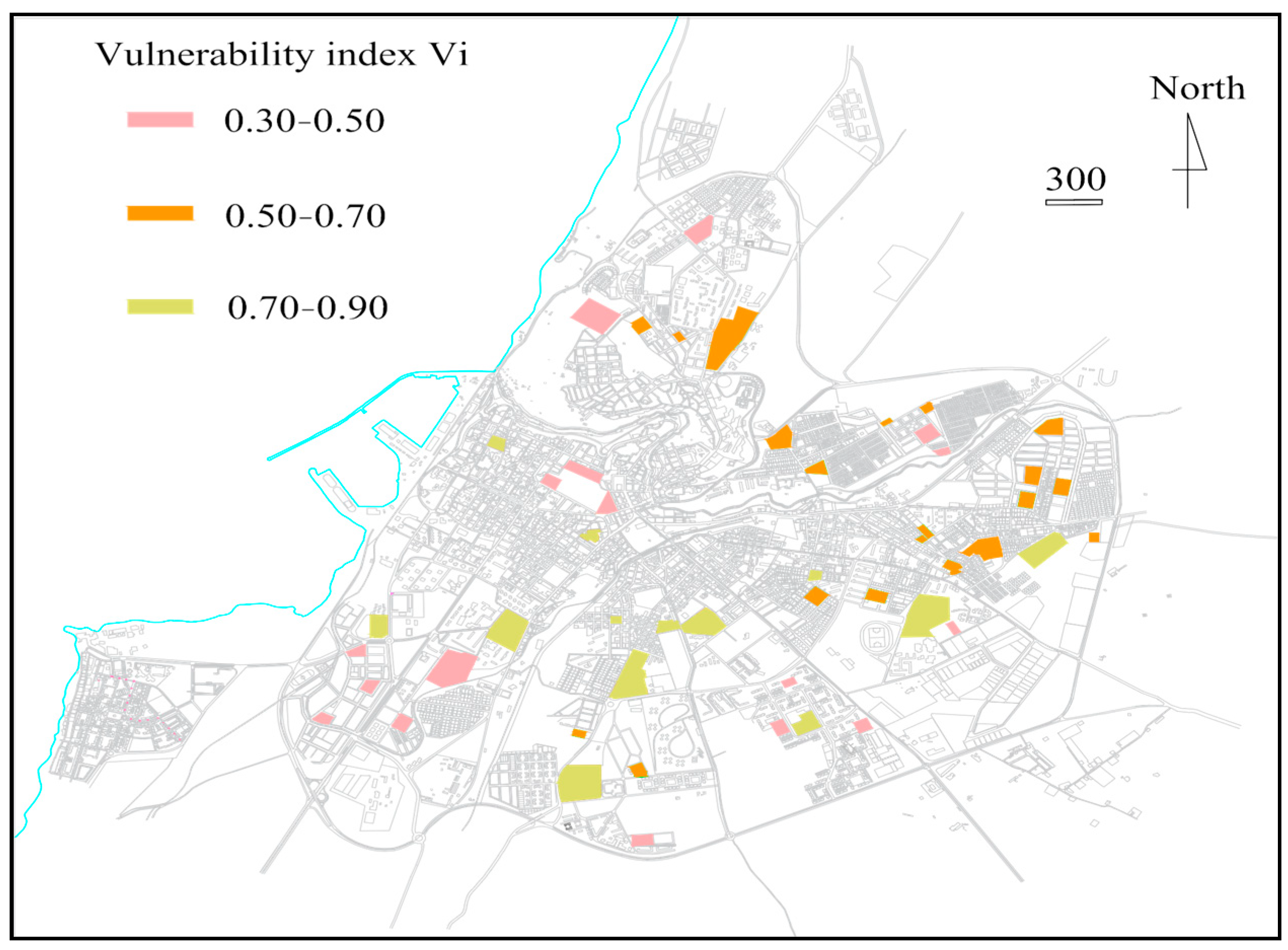
6.2. Estimation of Average Damage to Educational Buildings

6.3. Seismic Scenario Study
6.3.1. Seismic Scenarios for RC < 1980
| Intensity | D0% | D1% | D2% | D3% | D4% | D5% |
|---|---|---|---|---|---|---|
| I = 5 | 100.00 | |||||
| I = 6 | 100.00 | |||||
| I = 7 | 100.00 | |||||
| I = 8 | 73.40 | 26.60 | ||||
| I = 9 | 37.23 | 62.77 | ||||
| I = 10 | 29.79 | 70.21 | ||||
| I = 11 | 100.00 | |||||
| I = 12 | 100.00 |
6.3.2. Seismic Scenarios for RC > 1980
| Intensity | D0% | D1% | D2% | D3% | D4% | D5% |
|---|---|---|---|---|---|---|
| I = 5 | 100.00 | |||||
| I = 6 | 100.00 | |||||
| I = 7 | 100.00 | |||||
| I = 8 | 85.67 | 14.33 | ||||
| I = 9 | 72.87 | 27.13 | ||||
| I = 10 | 34.15 | 65.85 | ||||
| I = 11 | 27.74 | 72.26 | ||||
| I = 12 | 23.78 | 76.22 |
6.4. Spatial Distribution of Damages
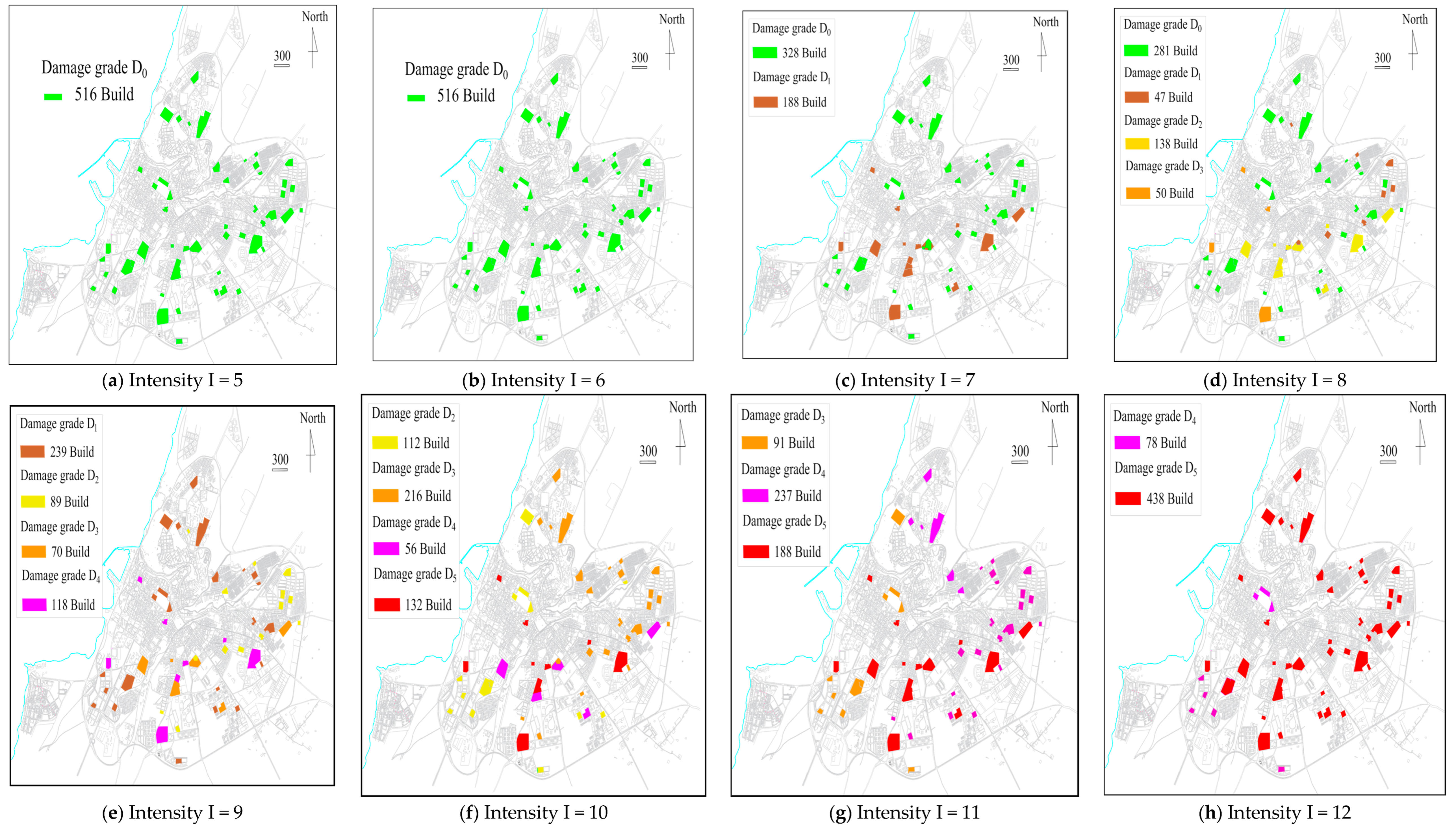

7. Conclusions
Author Contributions
Funding
Data Availability Statement
Acknowledgments
Conflicts of Interest
References
- USGS: United State Geological Survey. Major Earthquakes of 6 February 2023 in Turkey, Followed by Their Dozens of Replicas of Magnitude Greater than 4.5 until 12 February 2023; USGS: Reston, VA, USA, 2023. [Google Scholar]
- AFAD. L’organisme Public de Gestion des Catastrophes Turc. 2023. Available online: https://en.afad.gov.tr/earthquake-humanitarian-aid-campaign (accessed on 7 February 2023).
- Vicente, R.; Parodi, S.; Lagomarsino, S.; Varum, H.; Mendes da Silva, J.A.R. Seismic vulnerability assessment, damage scenarios and loss estimation: Case study of the old city center of Coimbra, Portugal. In Proceedings of the 14th Wold Conference on Earthquake Engineering, Beijing, China, 12–17 October 2008. [Google Scholar]
- Tomás, A.; Ródenas, J.L.; García-Ayllón, S. Proposal for new values of behaviour modifiers for seismic vulnerability evaluation of reinforced concrete buildings applied to Lorca (Spain) using damage data from the 2011 earthquake. Bull. Earthq. Eng. 2017, 15, 3943–3962. [Google Scholar] [CrossRef]
- Sabeur, B.; Bourdim, S.M.E.-A.; Rodrigues, H. Seismic Damage Scenarios for Existing Masonry Buildings for Educational Use in the Mostaganem City. KSCE J. Civ. Eng. 2023, 27, 2148–2162. [Google Scholar] [CrossRef]
- Barbat, A.H.; Carreoo, M.L.; Pujades, L.G.; Lantada, N.; Cardona, O.D.; Marulanda, M.C. Seismic vulnerability and risk evaluation methods for urban areas. A review with application to a pilot area. Struct. Infrastruct. Eng. 2010, 6, 17–38. [Google Scholar]
- Fernàndez, R.; Yamin, L.; D’Ayala, D.; Adhikari, R.; Reyes, J.C.; Echeverry, J.; Fuentes, G. A simplified component-based methodology for the seismic vulnerability assessment of school buildings using nonlinear static procedures: Application to RC school buildings. Bull. Earthq. Eng. 2022, 20, 6555–6585. [Google Scholar] [CrossRef]
- Whitman, R.V.; Reed, J.W.; Hong, S.T. Earthquake damage probability matrices. In Proceedings of the Fifth World Conference on Earthquake Engineering, Rome, Italy, 25–29 June 1973; pp. 2531–2540. [Google Scholar]
- Benedetti, D.; Petrini, V. On seismic vulnerability of masonry buildings: Proposal of an evaluation procedure. L’Industria Delle Costr. 1984, 18, 66–78. [Google Scholar]
- GNDT. Rischio Sismico di Edifici Pubblici—Parte I: Aspetti Metodologici; Centro Servizi Quasco: Bologna, Italy, 1993. [Google Scholar]
- Cherubini, A.; Di Pasquale, G.; Dolce, M.; Martinelli, A. Vulnerability assessment from quick survey data in the historic centre of Catania. In The Catania Project: Earthquake Damage Scenarios for High Risk Area in the Mediterranean; Faccioli, F., Pessina, V., Eds.; CNR-Gruppo Nazionale per la Difesa dai Terremoti: Roma, Italy, 1999; pp. 213–225. [Google Scholar]
- ATC13. Earthquake Damage Evaluation Data for California; Applied Technology Council: Redwood City, CA, USA, 1985. [Google Scholar]
- IRC. Buildings Selection Guide in View of Seismic Evaluation; Research Institute in Construction: Ottawa, ON, Canada, 1993; Available online: http://www.nrc-cnrc.gc.ca/obj/irc/doc/pubs/nrcc36943f.pdf (accessed on 7 February 2023)(In French—Original title: Manuel de selection).
- FEMA 154. Rapid Visual Screening of Buildings for Potential Seismic Hazards: A Handbook, 2nd ed.; Federal Emergency Management Agency and Applied Technology Council (ATC-21): Washington, DC, USA, 2002. [Google Scholar]
- Giovinazzi, S.; Lagomarsino, S. A macroseismic method for the vulnerability assessment of buildings. In Proceedings of the 13th World Conference on Earthquake Engineering, Vancouver, BC, Canada, 1–6 August 2004. Paper No. 896. [Google Scholar]
- Calvi, G.M.; Pinho, R.; Magenes, G.; Bommer, J.J.; Restrepo-Vélez, L.F.; Crowley, H. Development of seismic vulnerability assessment methodologies over the past 30 years. ISET J. Earthq. Technol. 2006, 43, 75–104. [Google Scholar]
- NZSEE. Assessment and Improvement of the Structural Performance of Buildings in Earthquakes. 2006. Available online: http://db.nzsee.org.nz/PUBS/2006AISBEGUIDELINES_Corr_06a.pdf (accessed on 10 January 2012). (In French, original title: Projet européen RISK-UE: Application à la ville de Nice).
- Guéguen, P.; Michel, C.; LeCorre, L. A simplified approach for vulnerability assessment in moderate-tolow seismic hazard regions: Application to Grenoble (France). Bull. Earthq. Eng. 2007, 5, 467–490. [Google Scholar] [CrossRef]
- Belhamissi, M. Histoire de Mostaganem (Des Origines à L’occupation Française). S.N.E.D: Alger, Algeria, 1976. [Google Scholar]
- Giovinazzi, S.; Lagomarsino, S. WP04: Guidelines for the Implementation of the I Level Methodology for the Vulnerability Assessment of Current Buildings: RISK-UE Project; University of Genoa: Genoa, Italy, 2002. [Google Scholar]
- Giovinazzi, S. Vulnerability Assessment and the Damage Scenario in Seismic Risk Analysis. Ph.D. Thesis, University of Florence, Florence, Italy, 2005. [Google Scholar]
- Grünthal, G. L’Echelle Macrosismique Européenne (EMS98); Conseil de l’Europe, Cahiers du Centre Européen de Géodynamique et de Séismologie: Luxembourg, 1998; Volume 19. [Google Scholar]
- NOS: National Office of Statistics. General Census of Population and Housing; NOS: Algiers, Algeria, 2020. [Google Scholar]
- UNICEF Algeria. Algeria National Report on Out-of-school Children. UNICEF Regional Office, Middle East and North Africa. 2014. Available online: https://reliefweb.int/sites/reliefweb.int/files/resources/150410_Algeria_report_French.pdf (accessed on 1 October 2014).
- Thireau, L. Mostaganem et ses Environs, Historique, Administration, Description, Renseignements Généraux; E. Prim: Mostaganem, Algeria, 1912. [Google Scholar]
- Benouar, D. Materials for investigation of the seismicity of Algeria and adjacent regions during the twentieth century. Ann. Geophys. 1994, 4, 37. [Google Scholar] [CrossRef]
- Harbi, A.; Peresan, A.; Panza, G.F. Seismicity of eastern Algeria: A revised and extended earthquake catalogue. Nat. Hazards 2010, 54, 725–747. [Google Scholar] [CrossRef]
- Ayadi, A.; Bezzeghoud, M. Seismicity of Algeria from 1365 to 2013: Maximum observed intensity map (MOI2014). Seism. Res. Lett. 2015, 86, 236–244. [Google Scholar] [CrossRef]
- Ayadi, A.; Ousadou, F.; Roumane, K.; Harbi, A.; Maouche, S.; Bezzeghoud, M.; Meghraoui, M. An update of Algerian’s seismic catalog from historical seismicity, archeoseismological, and paleoseismological studies. Arab. J. Geosci. 2021, 14, 1025. [Google Scholar] [CrossRef]
- RPA, 81V83, Règles Parasismiques Algériennes 1981, Version 1983; Centre National de Recherche Appliquée en Génie Parasismique: Algeria.
- Bounif, A.; Bezzeghoud, M.; Dorbath, L.; Legrand, D.; Deschamps, A.; Rivera, L.; Benhallou, H. Seismic source study of the 1989, October 29, Chenoua (Algeria) earthquake from aftershocks, broad-band and strong motion records. Ann. Geophys. 2003, 46, 625–646. [Google Scholar] [CrossRef]
- Ousadou, F.; Dorbath, L.; Dorbath, C.; Bounif, M.A.; Benhallou, H. The Constantine (Algeria) seismic sequence of 27 October 1985: A new rupture model from aftershock relocation, focal mechanisms, and stress tensors. J. Seismol. 2013, 17, 207–222. [Google Scholar] [CrossRef]
- Farida Ousadou and Mourad Bezzeghoud. Seismicity of the Algerian Tell Atlas and the Impacts of Major Earthquakes. In The Geology of the Arab World—An Overview; Bendaoud, A., Hamimi, Z., Hamoudi, M., Djemai, S., Zoheir, B., Eds.; Springer Geology; Springer Nature: Cham, Switzerland, 2019. [Google Scholar] [CrossRef]
- RPA, 88, Règles Parasismiques Algériennes 1988, Centre National de Recherche Appliquée en Génie Parasismique: Algeria.
- CGS. Algerian Seismic Code RPA99/VERSION 2003, National Earthquake Engineering Centre (CGS); Centre National de Recherche Appliquée en Génie-Parasismique: Algiers, Argelia, 2003; (In French—Original title: Règles parasismiques Algériennes—RPA99/VERSION 2003).
- Yelles-Chaouche, A.K.; Djellit, H.; Beldjoudi, H.; Bezzeghoud, M.; Buforn, E. The Ain Temouchent (Algeria) earthquake of December 22nd, 1999. Pure Appl. Geophys. 2004, 161, 607–621. [Google Scholar] [CrossRef]
- RPA, 99, Règles Parasismiques Algériennes 1999, Centre National de Recherche Appliquée en Génie Parasismique: Algeria.
- Meghraoui, M.; Maouche, S.; Chemaa, B.; Cakir, Z.; Aoudia, A.; Harbi, A. Coastal uplift and thrust faulting associated with the Mw = 6.8 Zemmouri (Algeria) earthquake of 21 May 2003. Geophys. Res. Lett. 2004, 31, L19605. [Google Scholar] [CrossRef]
- RPA, 99 V2003 Règles Parasismiques Algériennes 1999, Version 2003; Centre National de Recherche Appliquée en Génie Parasismique: Algeria.
- Meslem, A. Seismic vulnerability evaluation of existing algerian school buildings. ProVention Consortium Applied Grants for Disaster Risk Reduction II: September 2005–May 2006. 2006.
- AFPS. Preliminary Report of the AFPS Mission Organized with the Assistance of the Ministry of Ecology and Sustainable Development (MEDD/DPPR/SDPRM). 2003. Available online: www.afps-seisme.org (accessed on 8 July 2003).
- RISK-UE. An advanced approach to earthquake risks scenarios with to applications different European towns, WP4: Vulnerability of Current Buildings. 2003.
- CETE Méditerranée (Centre d’Etude Technique de l’Equipement Méditerranée). Comparaison de Méthodes Qualitatives D’évaluation de la Vulnérabilité des Constructions Aux Séismes, Plan Séisme—Action 2.4.7; Guide des méthodes de diagnostics de la résistance des bâtiments aux séismes; CETE Méditerranée: Bron, France, 2008. [Google Scholar]
- Mouroux, P.; Brun, B. Presentation of RISK-UE project. Bull. Earthq. Eng. 2006, 4, 323–339. [Google Scholar] [CrossRef]
- Mouroux, P.; Le Brun, B.; Depinois, S.; Bertrand, E.; Masure, P. European Project RISK-UE: Application to Nice City; BRGM Report # 53202; BRGM: Nice City, France, 2004. [Google Scholar]
- Milutinovic, Z.; Trendafiloski, G. WP4: Vulnerability of current buildings. RISK-UE Project: An advanced approach to earthquake risk scenarios with applications to different European towns. Skopje. 2003. Contract: EVK4-CT-2000-00014.
- Sandi, H.; Floricel, I. Analysis of seismic risk affecting the existing building stock. Proc. Eur. Conf. Earthq. Eng. 1995, 3, 1105–1110. [Google Scholar]
- Braga, F.; Dolce, M.; Liberatore, D. A statistical study on damaged buildings and an ensuing review of the M. S.K.-76 scale. In Proceeding of the 7th European Conference on Earthquake Engineering, Athens, Greece, 20–25 September 1982. [Google Scholar]
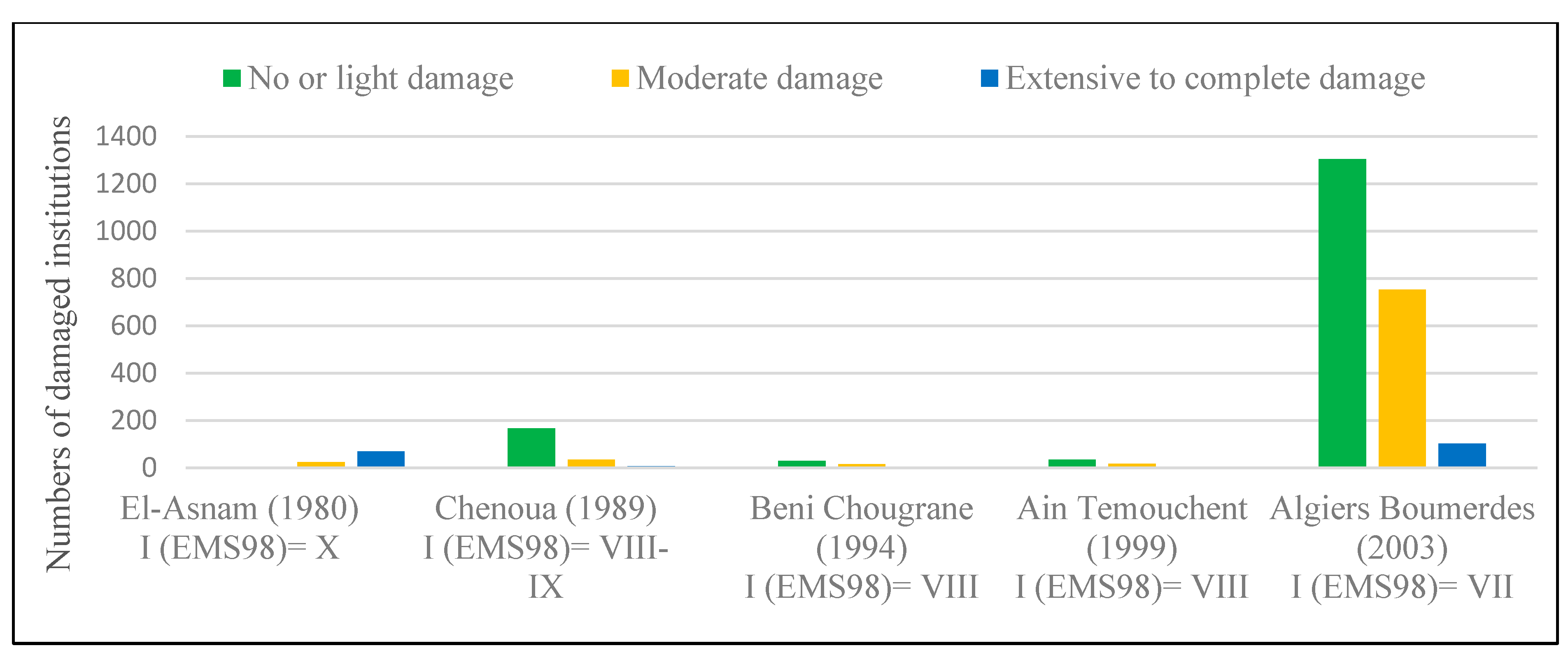
| Category of School | Number | Cost (DZD Millions) | |||
|---|---|---|---|---|---|
| Rebuilt | Rehabilitated | Rebuilt | Rehabilitated | ||
| Algiers Province | Primary School | 3 | 122 | 75 | 585 |
| Middle School | 3 | 76 | 180 | 760 | |
| High School | 3 | 40 | 450 | 570 | |
| Boumerdes Province | Primary School | 97 | 131 | 225 | 160 |
| Lower Secondary School | 9 | 35 | 540 | 700 | |
| Upper Secondary School | 7 | 18 | 1050 | 270 | |
| Total | 122 | 422 | 2520 | 3045 | |
| 31.59 (USD millions) | 38.06 (USD millions) | ||||
Disclaimer/Publisher’s Note: The statements, opinions and data contained in all publications are solely those of the individual author(s) and contributor(s) and not of MDPI and/or the editor(s). MDPI and/or the editor(s) disclaim responsibility for any injury to people or property resulting from any ideas, methods, instructions or products referred to in the content. |
© 2023 by the authors. Licensee MDPI, Basel, Switzerland. This article is an open access article distributed under the terms and conditions of the Creative Commons Attribution (CC BY) license (https://creativecommons.org/licenses/by/4.0/).
Share and Cite
Bendehiba, S.; Bourdim, S.M.E.-A.; Rodrigues, H.; Zelmat, Y. Vulnerability of Existing RC Building with Seismic Damage Scenarios: Case of Educational Buildings in Mostaganem City. Buildings 2023, 13, 1767. https://doi.org/10.3390/buildings13071767
Bendehiba S, Bourdim SME-A, Rodrigues H, Zelmat Y. Vulnerability of Existing RC Building with Seismic Damage Scenarios: Case of Educational Buildings in Mostaganem City. Buildings. 2023; 13(7):1767. https://doi.org/10.3390/buildings13071767
Chicago/Turabian StyleBendehiba, Sabeur, Sidi Mohammed El-Amine Bourdim, Hugo Rodrigues, and Yassine Zelmat. 2023. "Vulnerability of Existing RC Building with Seismic Damage Scenarios: Case of Educational Buildings in Mostaganem City" Buildings 13, no. 7: 1767. https://doi.org/10.3390/buildings13071767
APA StyleBendehiba, S., Bourdim, S. M. E.-A., Rodrigues, H., & Zelmat, Y. (2023). Vulnerability of Existing RC Building with Seismic Damage Scenarios: Case of Educational Buildings in Mostaganem City. Buildings, 13(7), 1767. https://doi.org/10.3390/buildings13071767






